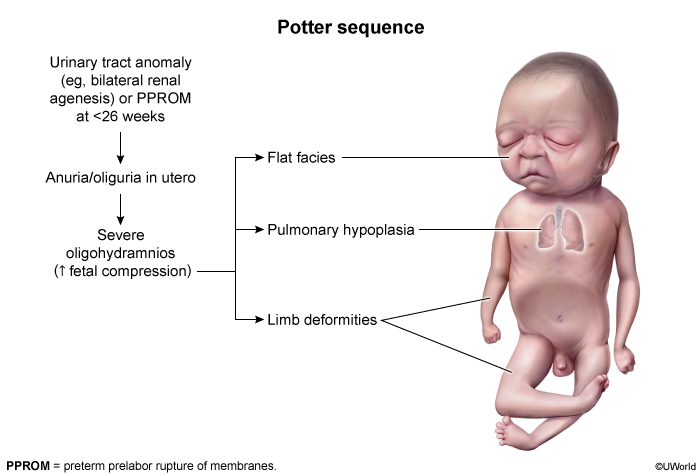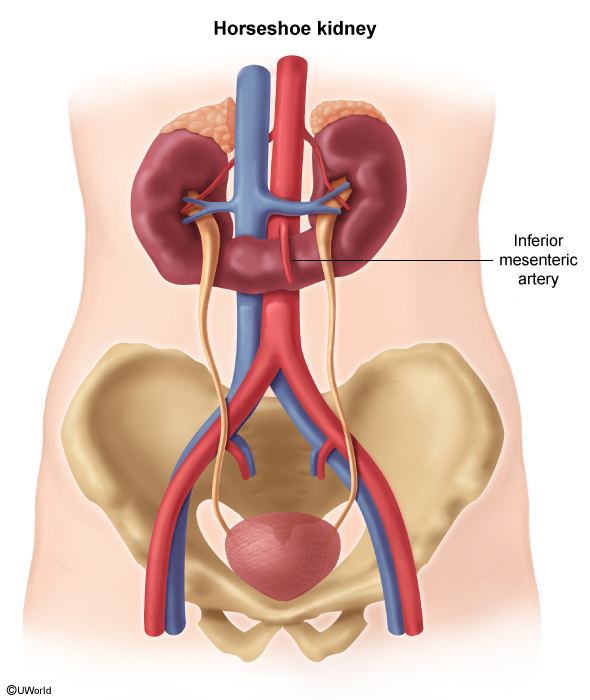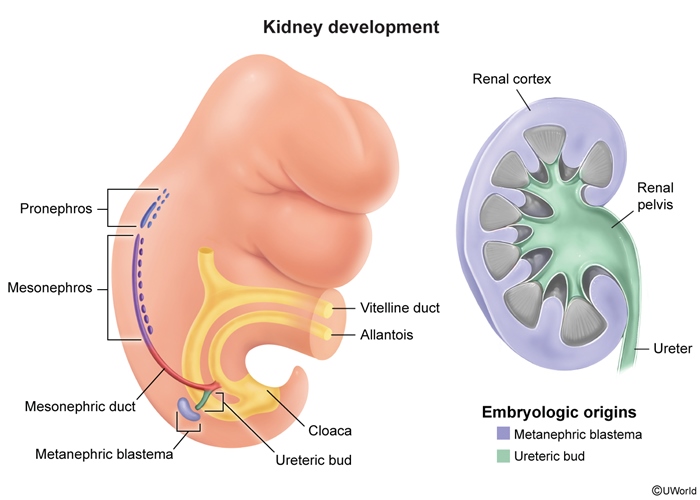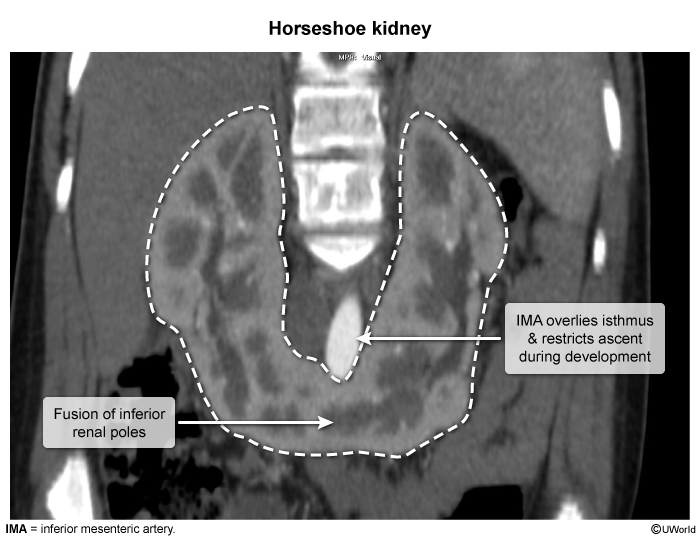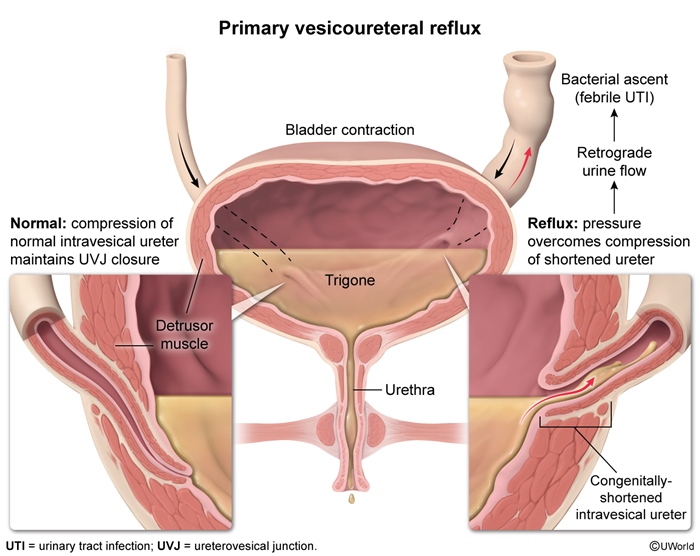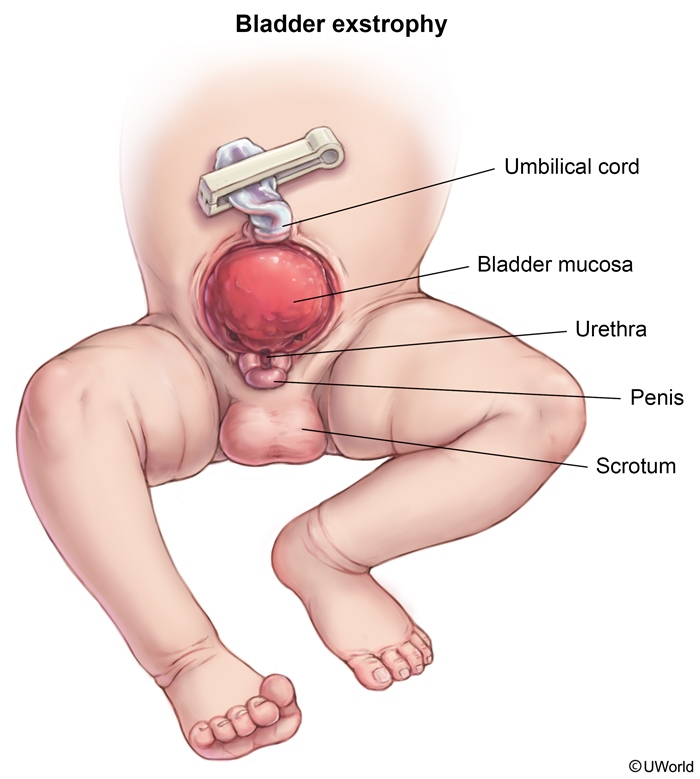Congenital Renal Anomalies
Article Sections
Introduction
Congenital anomalies of the kidneys and urinary tract (CAKUT) represent 20%-30% of all prenatally diagnosed congenital anomalies. CAKUT refers to a variety of anomalies that contribute to 30%-50% of cases of chronic kidney disease (CKD) in early childhood. This article focuses on the most common congenital renal anomalies, including renal parenchymal anomalies, horseshoe kidney, and collecting system anomalies.
Renal parenchymal anomalies
Renal parenchymal anomalies occur due to genetic and environmental factors that lead to abnormal nephron development (eg, size, number, location). Genetic mutations involving certain signaling proteins can impair reciprocal induction signaling between the ureteric bud and the metanephric blastema. Similarly, intrauterine exposure to certain medications (eg, angiotensin-converting enzyme inhibitors, angiotensin II receptor blockers) can disrupt renal parenchymal development. Renal parenchymal anomalies include renal agenesis, renal hypoplasia, and renal dysplasia.
Continue Learning with UWorld
Get the full Congenital Renal Anomalies article plus rich visuals, real-world cases, and in-depth insights from medical experts, all available through the UWorld Medical Library.
Figures
